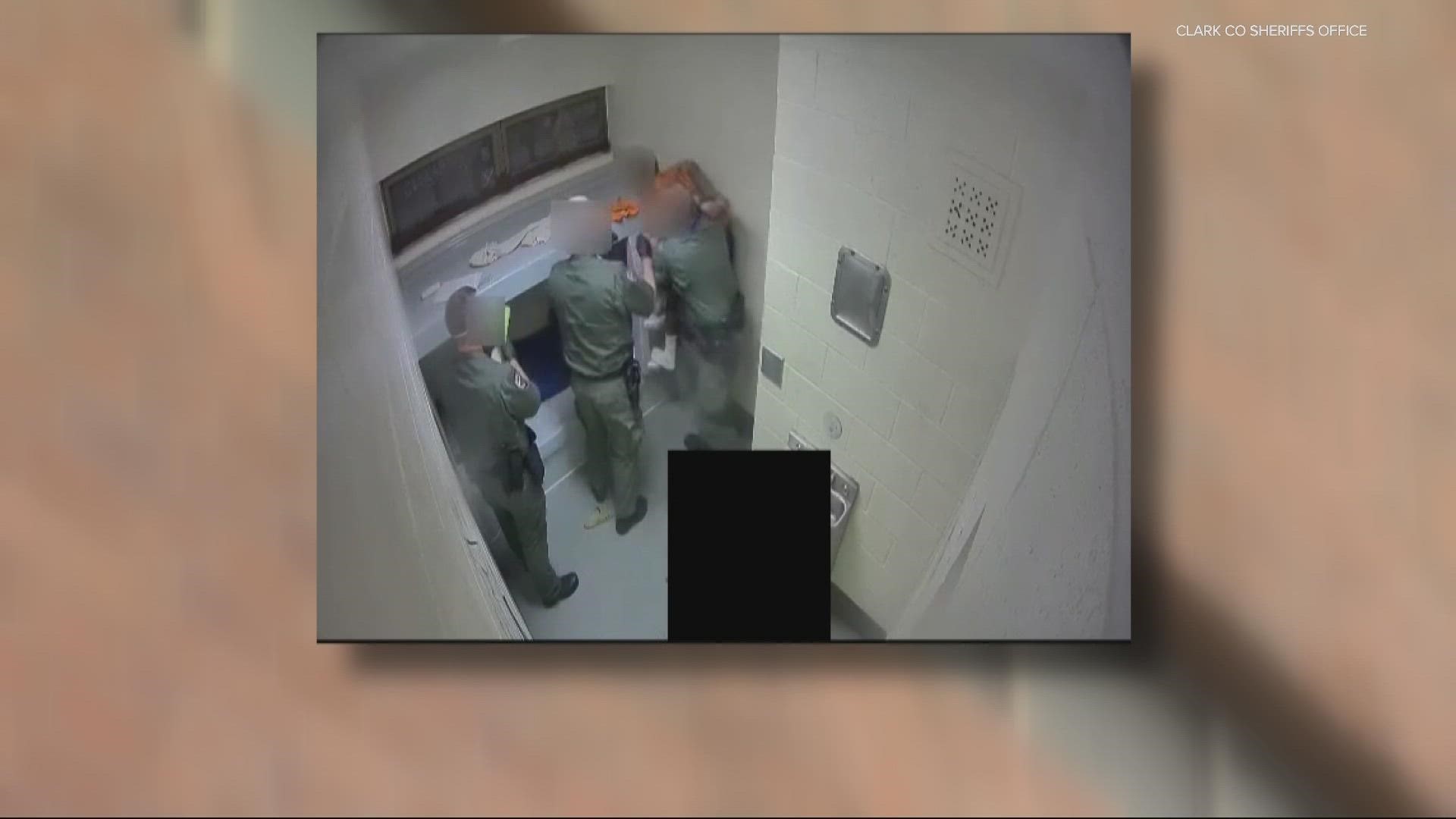CLARK COUNTY, Wash. — The Clark County Sheriff's Office (CCSO) has released footage of an incident in which corrections deputies at the county jail used what the office described as "possibly excessive" and at one point "potentially criminal" force when restraining an inmate last year.
The sheriff's office described the incident and a resulting criminal investigation in a press release on March 10, but did not release the three accompanying videos until Friday morning.
According to the press release, at about 6:30 a.m. on the morning of Aug. 13, corrections deputy Robert Hanks used force to restrain a handcuffed inmate while other deputies searched his cell and retrieved food trays. Hanks and the other deputies used force again while removing the handcuffs.
The inmate was in the jail's maximum security unit and had a history of previous assaults on corrections deputies, according to the press release.
A sheriff's office commander reviewed the video of the incident and concluded that the use of force may have been excessive and potentially criminal, according to the press release, and Sheriff Chuck Atkins referred the incident for a criminal investigation.
Hanks was placed on administrative leave, and the corrections sergeant was also disciplined for failing to view the video before the commander in accordance with the office's usual chain-of-command procedures for reviewing use-of-force incidents.
“Upon being notified of this incident, I viewed the video and was very troubled by what I observed," Atkins said in a statement. "I know the importance of not jumping to conclusions or prejudging an incident based upon video alone. I did however, order that the matter be immediately referred to an outside agency for a criminal investigation."
The Pierce County Sheriff's Department conducted the criminal investigation, and the results were received on March 10 and forwarded to the Clark County Prosecuting Attorney's Office for review, according to the press release. CCSO is also now conducting an internal affairs investigation.
"I am committed to transparency of how my office handles the internal affairs investigation, and what if any disciplinary action that may follow – once that investigation is completed," Atkins said.
The videos released on Friday show the incident from three cameras, two outside the cell and one inside. The videos do not have sound and are partially redacted, with black boxes on top of everyone's faces. There is also a static redacted box covering a portion of the cell interior nearest to the door.
In one of the external videos, deputies approach the cell and handcuff the inmate after he extends his hands through a slot in the closed cell door. The internal video then appears to show the inmate backing up from the door, with his hands handcuffed behind his back, as at least two of the deputies enter.
The deputy in front appears to be giving the inmate instructions and can be seen pointing at him multiple times, during which time the inmate stands in the center of the cell. A second deputy then walks past the first and pushes the inmate backwards onto the bed, then up against one of the walls, while another deputy appears to begin searching the bed area.
A few seconds later, the deputy who was holding the inmate against the wall can be seen pushing him back toward the bed, then down to the floor of the cell. The inmate appears to be struggling at this point, and two other deputies in the cell join the first in pushing the inmate into a facedown position on the floor.
After about 20 seconds, another deputy enters the cell with what appears to be a length of red strap or rope and hands one end to one of the deputies restraining the inmate. The deputy's back is to the camera and the video does not show what he does with it.
The deputies then file out of the cell, leaving the inmate on the floor. His hands still appear to be cuffed behind his back, although he is positioned in a way that puts his wrists behind the static redacted box. The external videos show one of the deputies feeding the free end of the red tether through the door slot as they exit.
The inmate then slides along the floor, appearing to be being pulled toward the door, although the view is partially obscured by the static redacted box. The external videos show four deputies pulling on the tether while the cell door closes and continuing after it closes.
The inmate's wrists are pulled through the door slot, and then the video appears to show the deputies disconnecting the tether and removing the handcuffs, then leaving the area. The overall incident takes place over the course of about five minutes.
The internal video continues for several more minutes and shows the inmate rearranging items on his bed, sitting on the bed and eating a meal, and at one point holding up a piece of paper with writing on it to the cell camera, although the video quality is not high enough for the writing to be legible.
Attorney Jason Kafoury with the law firm Kafoury & McDougal, a leading practice for handling use of force cases, gave his insight on this particular case.
"It’s hard without knowing what was said to know why the guards did what they did but in general, it seemed especially since he was cuffed, to be more force than was necessary," Kafoury said.
He described the video of the use of force incident as "eye opening" to the public, but that "the reality is this is happening to people in jail all the time."

